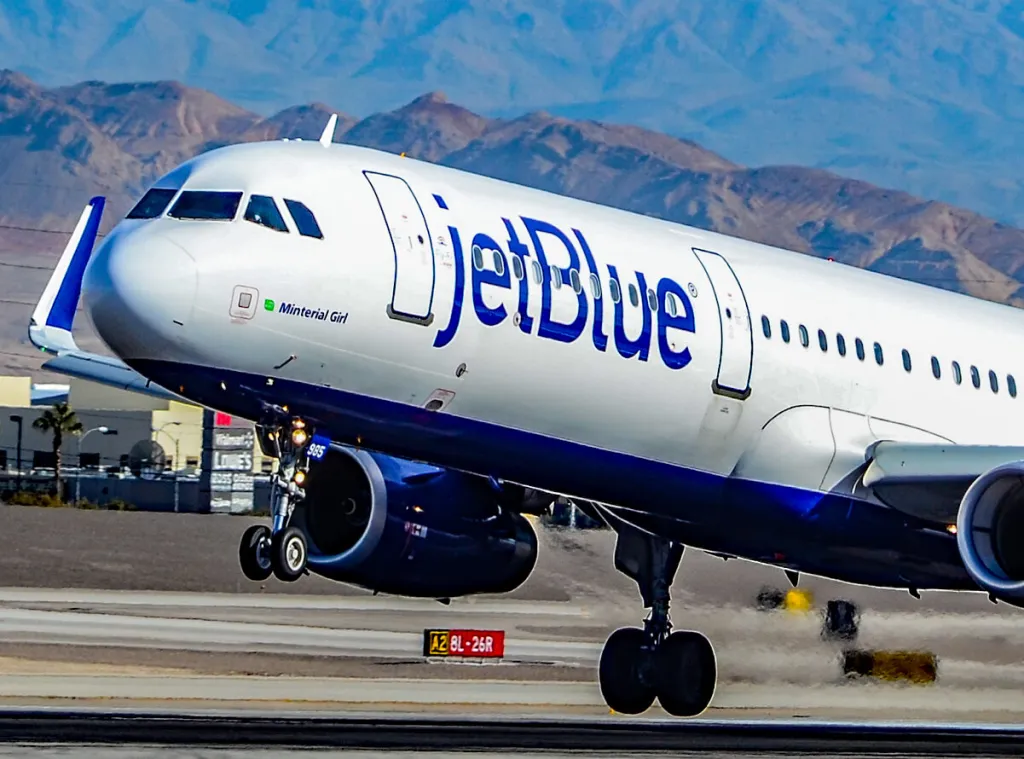Summary
JetBlue is looking to implement a slate of cost cuts as CEO Joanna Geraghty tells staff that the airline needs to reduce spending.
Source: Skift

AI News Q&A (Free Content)
Q1: What are the current financial challenges faced by JetBlue, and what cost-cutting measures are they considering?
A1: JetBlue is currently facing financial difficulties that make it unlikely for the airline to break even. As a response, CEO Joanna Geraghty has indicated a need for significant cost reductions. These measures may include operational efficiency improvements, renegotiating supplier contracts, and possibly reducing staff or flight schedules to better align with current demand and economic conditions.
Q2: How does JetBlue's financial strategy compare with other airlines in the context of cost-cutting measures?
A2: In the broader airline industry, financial strategies often include measures such as fleet optimization, route adjustments, and digital transformation for better operational efficiency. JetBlue, like other carriers, is looking to implement a combination of these strategies to reduce expenses while maintaining service quality. This is essential, especially in a market impacted by fluctuating fuel prices and variable demand.
Q3: What are some scholarly insights on airline disruption management, and how can they be applied to improve JetBlue's operations?
A3: Recent scholarly work, such as 'Integrated Airline Fleet and Crew Recovery through Local Search,' highlights the importance of integrated disruption management, which can resolve operational issues quickly and cost-efficiently. By adopting these strategies, JetBlue could enhance its resilience against disruptions, minimizing passenger inconvenience and reducing non-performance costs by up to 40%.
Q4: How do airline recovery strategies impact overall operational costs and passenger experience?
A4: Effective airline recovery strategies, as reviewed in 'Airline recovery problem under disruptions: A review,' can significantly lower operational costs and improve passenger experience by swiftly reallocating resources during disruptions. Strategies such as passenger-centric recovery and flexible aircraft maintenance help maintain service continuity and reduce the financial impact of delays.
Q5: What role does digital transformation play in helping airlines like JetBlue manage costs more effectively?
A5: Digital transformation plays a crucial role in cost management by enhancing operational efficiencies, improving customer service, and enabling data-driven decision-making. For JetBlue, leveraging technology for route optimization, predictive maintenance, and personalized customer interactions can lead to significant cost savings and improved competitive positioning.
Q6: How do external economic factors influence JetBlue's financial performance and strategic decisions?
A6: Economic factors such as fuel prices, interest rates, and consumer spending power greatly influence JetBlue's financial performance. High fuel prices increase operational costs, while economic downturns can reduce passenger numbers. These factors necessitate strategic adjustments like cost cuts, pricing strategies, and innovation in service delivery to sustain profitability.
Q7: What are the potential risks and benefits of JetBlue's planned cost-cutting initiatives for employees and passengers?
A7: The planned cost-cutting initiatives may pose risks such as reduced employee morale, potential layoffs, and possible service disruptions. However, the benefits include improved financial health of the airline, potential fare reductions for passengers, and the ability to invest in future growth and innovation. Balancing these outcomes is crucial for maintaining a positive company culture and customer satisfaction.
References:
- JetBlue Airways Corporation - Wikipedia
- Integrated Airline Fleet and Crew Recovery through Local Search
- Airline recovery problem under disruptions: A review





